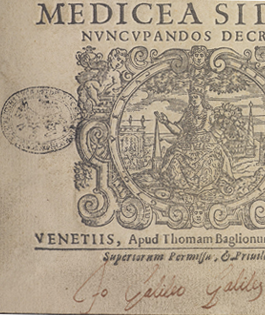Fakes and Forgeries

Part of our series featuring Townsend Working Groups, this post by Jane Raisch, coordinator of the History of the Book working group, reviews and reflects on her group’s recent interdisciplinary conference on literary and artistic forgeries.
Forgery is at once both infuriating and captivating. It can challenge our assumptions about artistic originality, it can remind us that objects of aesthetic or historical value remain embedded within economic systems of profit, and it can perplex us with its strange blend of creativity and criminality. Inspired and intrigued by these questions, the History of the Book working group brought together scholars from across the country for an interdisciplinary conference on forgeries, fakes, and counterfeits entitled “Faking It: Forgery and Problems of Authenticity.”
Our keynote speaker was Georgia State professor Nicholas Wilding, who is in the midst of exposing a series of major international rare book forgeries. Wilding unexpectedly stumbled upon these forgeries while researching a newly rediscovered and incredibly valuable copy of Galileo’s Sidereus Nuncius (Venice, 1610) that promised to fundamentally alter our understanding of Galileo’s lunar observations. The copy, purchased by the New York rare bookseller Martayan Lan, had early draft drawings of the moon’s surface unlike those usually included with the text and was signed by Galileo himself. However, while conducting his research, Wilding detected a variety of typographic and visual inconsistencies, including some improbably fused letters and a suspiciously distinct library stamp. Expertly employing his training in the history of book production, design, printing, and provenance, Wilding convincingly demonstrated that this particular copy of the Sidereus Nuncius—signature, illustrations, and all—was a forgery.
Wilding’s keynote lecture emphasized that there are times when documents or artworks are unambiguously forged, and he compellingly illustrated the intellectual damage done by forgers who knowingly seek to deceive. Other papers throughout the conference focused on more ambivalent cases of forgery or suspicious authenticity. Why was a known forgery allowed to be included in the Seven Military Classics (Wujing Qishu) of Song dynasty China? What does it mean that a Catholic church in Summit, New Jersey is home to a “true copy” of the Turin Shroud?
Some papers reconsidered labels of forgery and concepts of intellectual property in light of different historical and cultural contexts. Does our language for identifying forgery have to change, for example, when faced with the plurality of authorial voices in exegetical texts (Midrash) from Late Antique Judaism? How does it accommodate dramatic changes in style over the course of a single artistic career?
Every paper at the conference touched upon the idea that the scholar is inevitably, and sometimes problematically, implicated within questions of forgery and authenticity. While scholarly intervention is often essential for identifying the anachronistic or the philologically suspect, this intervention is itself informed by larger academic debates, changing standards of evaluation, and even professional reputations. Ideally, the study of forgery can provide us with an opportunity to reflect on such issues—to interrogate our role as sometime arbiters of authenticity, to refine our methods for authentication, and to reexamine how we confront and construct the fake.
For more on the conference and on the History of the Book working group, please visit: http://hobconference2014.tumblr.com/.
Professor Wilding’s role in the ongoing investigation into the Martayan Lan Sidereus Nuncius forgery has been recently reported in The New York Times.